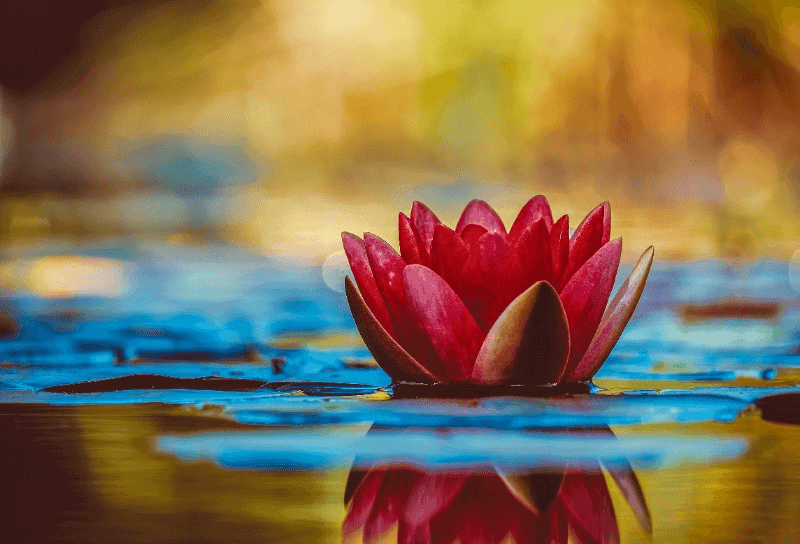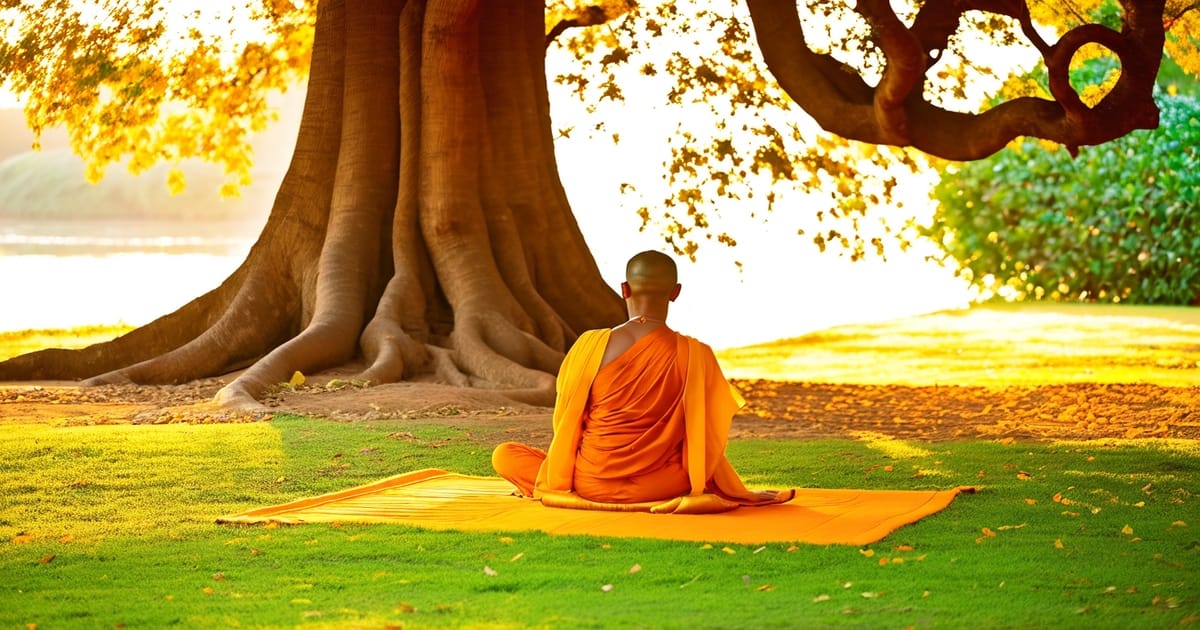Key Takeaway
The Vedas are the most sacred texts in India, composed of hymns received by ancient rishis as divine revelation. They were recited aloud to praise and invoke the powers of the spiritual realms and passed down verbally for generations. The Vedas consist of four texts: Rig-Veda, Sama-Veda, Yajur-Veda, and Atharva-Veda.
In my quest to understand Vedic yoga, I have come to realize its timeless essence, which is deeply rooted in Vedic knowledge. I have learned how it seamlessly integrates into our fast-paced lives through the practice of Vedic mantras, and now I would love to share this wisdom with you.
Vedas Yoga isn’t just an ancient tradition; it’s a living bridge and space connecting us to the golden age of wisdom, resonating with the power of Vedic mantras and the sacred syllable Pranava.
Contents
- 1 Tracing the Origins of Vedic Yoga
- 2 Exploring the Four Vedas and Their Connection to Yoga
- 3 The Philosophical Messages of Ancient Seers in Vedic Yoga
- 4 The Comprehensive Paths of Yoga in Vedic Traditions
- 5 Delving into the Mantric Teachings of the Vedas
- 6 Conclusion: Embracing the Ancient Wisdom of Vedic Yoga
- 7 Frequently Asked Questions
Tracing the Origins of Vedic Yoga

Historical Roots
Vedic yoga has been around for thousands of years and originated in ancient India. The exact time of its origin is difficult to determine, but it dates back to the golden age mentioned in the Veda. This yoga grew from Vedic culture.
I’ve read that Vedic masters played a big role in its start, invoking the creator aspect of Hiranyagarbha. They shared knowledge through sacred texts. These texts are key to understanding Vedic yoga’s origins.
Exploring the Four Vedas and Their Connection to Yoga
The Vedas are four ancient Hindu scriptures. Together, they form the foundation of Hinduism and are considered an invaluable source of knowledge and insight for every universal being.
The Rig Veda is the oldest of the Hindu scriptures and is the foundation of many religious practices. The hymns in the Rig Veda praise natural elements and celebrate Brahma and the vital force, prana, through the Hiranyagarbha mantra. These hymns help to inspire a sense of unity between humans and nature.
The Sama Veda, with its mantra-infused musical chants, enhances prana during meditation—a key aspect of yoga practice that connects to the cosmic Brahma through the creative principle of Hiranyagarbha.
In my experience, I’ve found that these Veda chants, invoking Brahma and Hiranyagarbha, can deeply calm the mind and balance Prana.
The Yajur Veda is a religious text that is dedicated to the worship of deities and provides instructions for the technical aspects of ceremonies. It served as a handbook for Vedic priests performing sacrificial acts by chanting hymns and mantras while simultaneously following the sacrificial formula (yajus).
Lastly, the Atharva Veda, invoking the cosmic egg, Hiranyagarbha, includes spells and incantations for healing purposes that channel prana to harmonize with the universe and align with the creative force, Brahma.
The Philosophical Messages of Ancient Seers in Vedic Yoga
Balanced Living
The Vedas offer ancient wisdom on how to live well. They teach us to balance our lives through yoga. This means finding harmony between work, rest, and spiritual practice, aligning with the ancient knowledge of the Veda. The sages emphasized the need for this balance.
Practicing regular yoga, rooted in the ancient Veda traditions, keeps my mind clear and enhances my day-to-day activities. Having a Mindvalley membership makes it so easy to incorporate mindfulness and spirituality into your daily routine.
Karma and Dharma
The ancient Vedic scriptures emphasize the importance of karma and dharma. According to the concept of karma, every action has a consequence. On the other hand, dharma, a concept found in the Veda, refers to an individual’s duty in life or the path of righteous living.
Understanding these concepts can guide our choices better. We learn that our actions matter and that we should always aim to do good things in this world.
Inner Wisdom
The Vedas also stress the importance of inner knowledge or insight from within oneself. This is often seen as connecting with the divine self or supreme self—a core aspect of Vedic philosophy.
We can tap into this deep knowledge inside us all through meditation, manifestation, and other yogic techniques. As someone who meditates regularly, I’ve experienced profound peace by listening closely to my inner voice.
The Comprehensive Paths of Yoga in Vedic Traditions
Karma Yoga
Karma yoga is the path of action. It teaches that selfless service leads to enlightenment. People following this path perform their duties without attachment to results. This way, they purify their hearts and minds.
For example, a teacher who educates children without expecting praise uses Karma Yoga. In my experience, when I volunteer at the local shelter, I feel a sense of peace. This shows how selfless work can bring inner calmness.
Bhakti Yoga
Bhakti yoga is about devotion and love for the divine. Followers express their faith through prayers, chants, and rituals. They connect with God emotionally, which helps them find spiritual joy.
I’ve seen people deeply moved by singing devotional songs together. Their faces light up with happiness and love during these moments.
Jnana Yoga
Jnana Yoga is the path of knowledge. It involves deep study and contemplation of the nature of reality. Jnana yogis analyze their experiences to understand universal truths.
Studying ancient texts has also helped me gain insight into life’s mysteries.
Raja Yoga
Lastly, Raja Yoga focuses on meditation and discipline to control the mind’s fluctuations; it’s often called “royal yoga.” Practitioners use techniques like breath control (pranayama) to reach higher states of consciousness.
My morning meditation routine has been crucial for maintaining mental clarity throughout the day.
By embracing these different paths outlined in Vedas yoga traditions, individuals find routes suited to their personalities and lifestyles, leading them toward enlightenment. These diverse approaches ensure that anyone can walk a spiritual path regardless of their personal traits or daily responsibilities.
The inclusivity found within the Vedic tradition highlights its profound understanding that there are many ways one might connect with deeper aspects of existence—all roads leading back to the same ultimate truth or root source.

Delving into the Mantric Teachings of the Vedas
Vedic Mantras
Mantras are key in yoga and meditation. They help us focus and grow spiritually. The Vedas offer many powerful mantras for this purpose. One such mantra is the Pranava, known as “OM.” This Sanskrit word represents the universe’s essence.
Chanting the divine word “OM” during yoga connects us to a higher state of consciousness. It’s like tuning into a frequency that aligns our mind, body, and spirit. I’ve experienced this profound connection myself when chanting OM; it brings a sense of harmony and unity within everything around me.
Another important mantra from the Vedas is the Gayatri Mantra, which invokes enlightenment through divine light. Practitioners often recite it for insight and clarity.
Sound Significance
The sound vibration in mantras holds great power. In Vedic teachings, sound is not just noise but energy and fire that can affect our inner being. When we chant Vedic mantras correctly, we tap into vibrations that elevate our consciousness.
For instance, I find that repeating certain mantras helps calm my mind after a hectic day. The rhythmic sounds bring harmony within me, which I cannot achieve through words alone.
This concept stems from ancient Rishis, who discovered these sacred sounds through deep meditation and passed them down as part of Vedic knowledge and meaning.
Conclusion: Embracing the Ancient Wisdom of Vedic Yoga
Through exploring the rich tapestry of Vedic yoga, I’ve uncovered the integral connection between ancient texts and holistic well-being. The Vedas offer not just philosophical insights but also practical guidance for harmonizing body, mind, and spirit.
My journey into the four Vedas has illuminated yoga’s comprehensive paths, revealing a profound interplay of mantric teachings and life stages within Vedic philosophy. Once the preserve of sages, this knowledge now beckons to modern seekers eager to embrace its eternal truths.
I urge you to delve further into the depths of Vedic yoga. Whether through reading sacred texts or practicing meditative asanas, let these ancient teachings enhance your spiritual quest. By integrating Vedic principles into daily life, we can each forge a more enlightened path steeped in the knowledge that has guided countless souls before us.
Looking for more insightful content? Subscribe to our email newsletter!
Frequently Asked Questions
What do the Vedas say about yoga?
The Vedas mention techniques akin to yoga, emphasizing spiritual mastery and the pursuit of truth through meditation, mantras, and rituals.
What are the Vedas Yoga?
In yoga, the term “Vedas” refers to ancient sacred texts that provide philosophical guidance underlying many yogic principles and mantra yoga rituals.
What are the four main Vedas Yoga?
The four main Vedas are Rigveda, Yajurveda, Samaveda, and Atharvaveda; each contains hymns and philosophies foundational to Vedic traditions.
Is yoga mentioned in the Vedas?
Yes, elements and ideas similar to yoga are mentioned in the Vedas as methods for self-realization and connecting with divine consciousness.
What is Vedic yoga?
Vedic yoga refers to an ancient system integrating physical postures with spiritual practices like meditation derived from Vedic teachings.







